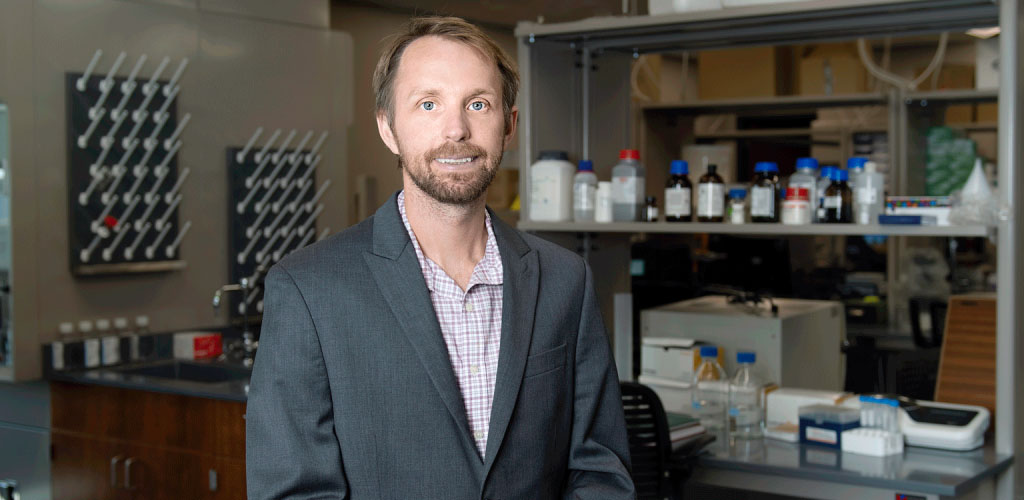
Brian Meckes, assistant professor of biomedical engineering at UNT, recently received a grant from the National Institutes of Health to develop an advanced method of printing complex three-dimensional biological tissues, with potentially far-reaching impacts in medical research.
“We have technology that’s being developed that allows tissues to be printed,” Meckes says. “But it’s really hard to control cellular organization in 3D with single cell control.”
Layers of different cells are now being printed or grown reliably in the laboratory, but complex cellular interactions present in many organs are not so simple to replicate. It isn’t just a matter of printing skin, bone or kidney cells — they have to line up in very specific complex ways.
“We want to be able to print a larger 3D structure, but at the same time we want to be able to strategically place individual cells,” Meckes says. “Our goal is to bridge that gap.”
Meckes believes he has discovered a method to create complex 3D tissues with precise control over where individual cells are placed by using DNA technology to help the tissues align. DNA is made up of two strands of complimentary pairs. Separated pairs should match back up perfectly. Meckes will place complementary strands at locations where the cells will need to line up between tissue layers. Only complementary pairs will match and stick the cells together like two pieces of Velcro, with the cells aligning exactly where needed.
The resulting technology could be used for new 3D printed organ models that could speed up discovery of new therapeutics. If bioprinted tissues behave like an actual organ inside a human body, they will be more useful for testing new pharmaceuticals or other therapies.
Meckes believes the technology generated from this project will open new avenues for studying multicellular communication pathways, stem cell differentiation and developmental processes. It also could have applications in arthritis and cancer treatment as well as organ regeneration by leading to better mimicking of normal cell physiology.
“This technology is not only applicable to one disease,” Meckes says. “It’s an enabling technology for solving multiple health problems.”
The two-year award is funded through the NIH’s R21 program, which funds exploratory and developmental research for early-stage conceptual projects. Meckes is optimistic that his concept will prove successful and have broad impacts for the future.
“My ten-year vision for this project is that it could lead to new therapeutics that we haven’t even yet considered,” Meckes says.
